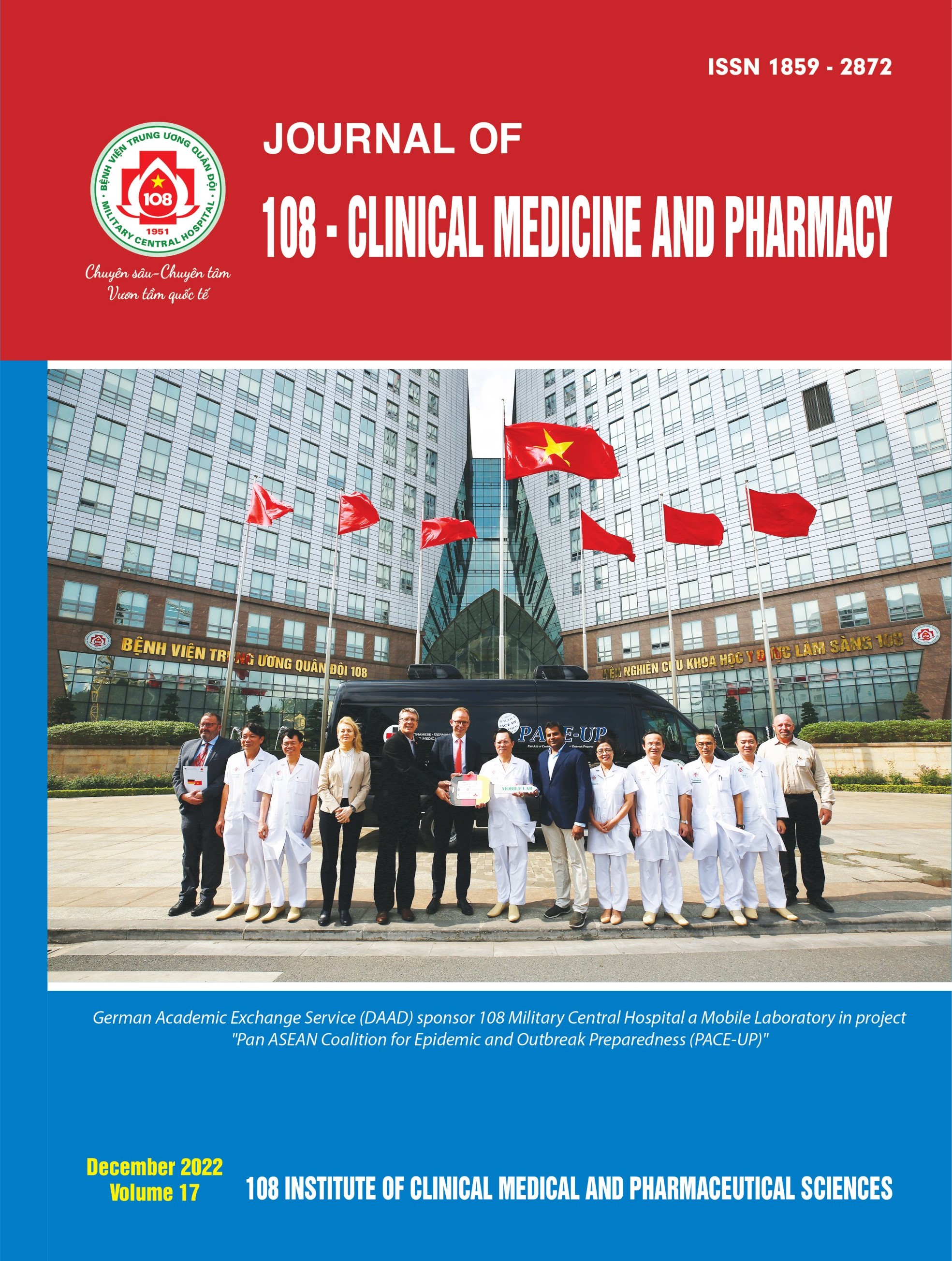Lung colloidal adenocarcinoma - A case report and review of relevant documentation
Main Article Content
Tóm tắt
According to the histopathological classification of lung tumors of the World Health Organization (WHO) 2015, update 2021, the adenocarcinoma group includes the following subtypes: (1) minimally invasive adenocarcinoma (MIA); (2) Invasive non-mucinous carcinoma (INMA); (3) Invasive mucinous carcinoma (IMA); (4) Colloidal adenocarcinoma (CA); (5) Fetal cancer (FA); (6) Enteric-type adenocarcinoma (EA). In which group colloidal cancer (CA) is said to be very rare, with high malignancy, rapid progression, very difficult to treat. The definitive diagnosis of lung cancer (LC) in general and Adenocarcinoma in particular is still the absolute role of pathology; The problem of subtype LC diagnosis is essential for treatment and prognosis. We present a rare case of CA with a giant mucinous mass in the lower lobe of the right lung, destroying the diaphragm descending to the abdomen, making preoperative diagnosis extremely difficult. The patient underwent surgery to remove the lower lobe of the right lung, and the postoperative specimens were diagnosed with CA; The prognosis after surgery was very conservative. Through the report, we hope that colleagues will have a better diagnostic approach when encountering a similar case.
Article Details
Các tài liệu tham khảo
2. Kalhor N (2014) Colloid carcinoma of the lung: Current views. Semin Diagn Pathol 31(4): 265-270. doi: 10.1053/j.semdp.2014.06.003. Epub 2014 Jun 11. PMID: 25239272.
3. Chuang HW, Liao JB, Chang HC, et al (2014) Ciliated muconodular papillary tumor of the lung: A newly defined peripheral pulmonary tumor with conspicuous mucin pool mimicking colloid adenocarcinoma: A case report and review of literature. Pathol Int 64(7): 352-357. doi: 10.1111/pin.12179. PMID: 25047506.
4. Liu Y, Kang L, Hao H et al (2021) Primary synchronous colloid adenocarcinoma and squamous cell carcinoma in the same lung: A rare case report. Medicine (Baltimore) 100(6): 24700. doi: 10.1097/MD.0000000000024700. PMID: 33578606.
5. Ogusu S, Takahashi K, Hirakawa H et al (2018) Primary pulmonary colloid adenocarcinoma: How can we obtain a precise diagnosis? Intern Med. 57(24): 3637- 3641. doi: 10.2169/internalmedicine. 1153-18. Epub 2018 Aug 10.PMID: 30101926
6. Kim HK, Han J, Franks TJ et al (2018) Colloid Adenocarcinoma of the Lung: CT and PET/CT findings in seven patients. AJR Am J Roentgenol. 211(2): 84-91. doi: 10.2214/AJR.17.19273. Epub 2018 May 24.PMID: 29792740.
7. Liu Y, Kang L, Hao H et al (2021) Primary synchronous colloid adenocarcinoma and squamous cell carcinoma in the same lung: A rare case report. Medicine (Baltimore) 100(6):24700. doi: 10.1097/MD.0000000000024700. PMID: 33578606.
8. Nakamura D, Kondo R, Makiuchi A et al (2020) Successful resection of a giant pulmonary colloid adenocarcinoma via median sternotomy. Case Rep Oncol 13(3): 1097-1102. doi: 10.1159/000509999. eCollection 2020 Sep Dec. PMID: 33082754.
9. Morita K, Nagashima A, Takemoto N et al (2014) Primary pulmonary mucinous (colloid) adenocarcinoma with postoperative bone metastasis. Ann Thorac Cardiovasc Surg 20: 677-81. doi: 10.5761/atcs.cr.13-00260. Epub 2014 Feb 4. PMID: 24492172.
9. Murai T, Hara M, Ozawa Y et al (2011) Mucinous colloid adenocarcinoma of the lung with lymph node metastasis showing numerous punctate calcifications. Clin Imaging 35(2): 151-155. doi: 10.1016/j.clinimag. 2010.05.003. PMID: 21377056.
 ISSN: 1859 - 2872
ISSN: 1859 - 2872
